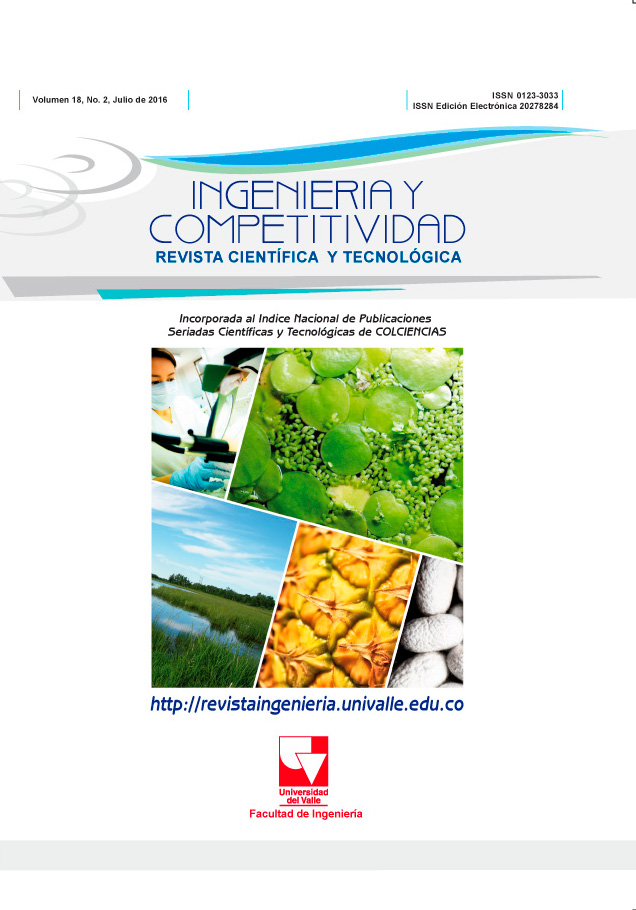Tratamiento de lixiviados de relleno sanitario por medio de humedales construidos sembrados con policultivos de plantas nativas
Palabras clave:
Especies vegetales tropicales, heliconia psittacorum, humedal subsuperficial, lixiviados de relleno sanitario, remoción de metales pesados.Contenido principal del artículo
El uso de humedales construidos para el tratamiento de aguas residuales (doméstica, lluvia, lixiviados, drenaje de minas) ha venido incrementándose desde mediados de la década de los 90´s. Este trabajo presenta los resultados del estudio a escala piloto del desempeño de humedales construidos (CW) sembrados con policultivos de las especies tropicales Gynerium sagittatum (Gs), Colocasia esculenta (Ce) y Heliconia psittacorum (He) tratando lixiviado de relleno sanitario.
Los CW fueron operados durante 7 meses a gravedad y flujo continuo (Q=0.5 m3 d-1). Tres CW fueron divididos en tres secciones y en cada sección (5.98 m2) se sembraron 36 plántulas de una especie. La otra unidad se plantó aleatoriamente.
La distribución final de plantas fue: : CW-I (He-Ce-Gs), CW-II (aleatorio), CW-III (Ce-Gs-He) and CW-IV (Gs-He-Ce).
Todos los humedales recibieron el efluente de una laguna anaerobia de alta tasa (BLAAT®) que operó como tratamiento primario. Muestras de entrada y salida de cada CW fue analizada semanalmente para DQO total y filtrada y quincenalmente para metales pesados (Cd, Pb and Hg). Floración, longitud de tallo, clorofila y tasa fotosintética en las plantas fue medida quincenalmente. Las eficiencias de remoción fueron buenas; con mejor desempeño en el CW-IV (60-90%) para todos los parámetros, indicando que la distribución de las especies vegetales puede afectar la capacidad de remoción de los CW.
Todas las especies vegetales presentaron buena respuesta fisiológica y crecimiento constante a lo largo de la investigación.
Así, Las plantas nativas demostraron su capacidad para la fitorremediación de lixiviados de rellenos sanitarios y todas pueden ser categorizadas como acumuladoras de metales pesados.
Downloads
Los autores que publican en esta revista están de acuerdo con los siguientes términos:
Los autores ceden los derechos patrimoniales a la revista y a la Universidad del Valle sobre los manuscritos aceptados, pero podrán hacer los reusos que consideren pertinentes por motivos profesionales, educativos, académicos o científicos, de acuerdo con los términos de la licencia que otorga la revista a todos sus artículos.
Los artículos serán publicados bajo la licencia Creative Commons 4.0 BY-NC-SA (de atribución, no comercial, sin obras derivadas).

